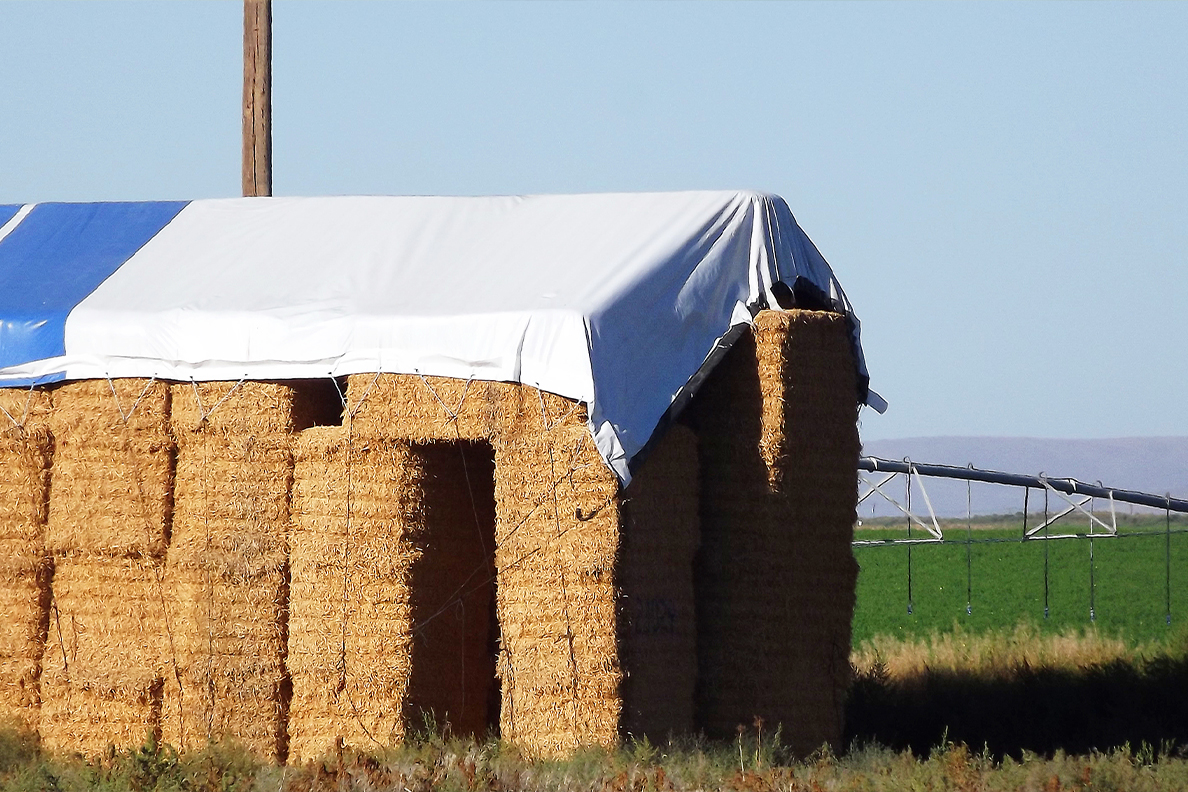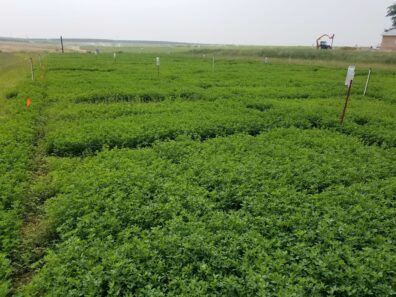



Revealing the diversity of genes behind better alfalfa hay
Alfalfa is a major Northwest crop and an important food source for dairy cattle and other livestock worldwide.Scientists at Washington State University, the U.S. Department of Agriculture, and partner institutions have identified 10 genetic markers and promising parent varieties that could boost the quality of alfalfa hay, making it more digestible and nourishing.
“People don’t eat alfalfa, but millions of animals do,” said team leader Steve Norberg, a forage specialist with WSU Extension. “Alfalfa is one of the most important crops in the U.S., and an agricultural mainstay here in the Pacific Northwest.”
Worth more than $9 billion annually, alfalfa is the nation’s third-most valuable field crop. Grown on more than 400,000 acres across Washington state, most intensively in the irrigated Columbia River Basin, the hay is exported around the world, notably to China, Japan, Saudi Arabia, and the United Arab Emirates, where demand has risen steadily.
The crop’s large and complex genome has long hampered efforts to breed alfalfa for desirable qualities like higher protein, lower fiber, and easier digestion by dairy cows.
“Our goal was to find the genes behind those traits, and then pass that data on to commercial breeders who can introduce better varieties of alfalfa,” Norberg said.
In the two-year study funded by USDA’s National Institute of Food and Agriculture, scientists from WSU, USDA’s Agricultural Research Service, the University of Wisconsin, the University of Idaho, Oregon State University and the University of Florida examined 200 domestic and international alfalfa strains in field tests in Washington, Idaho, and Oregon.
Examining the resulting crops for 30 traits that affect forage quality, while also noting yields and fall dormancy scores, they genotyped promising plants and identified 10 genetic markers associated with important traits such as fiber content, fiber digestibility, and protein, screened from nearly 47,000 DNA markers.
Some of the markers that the researchers found were linked to more than one trait, showing that common genetic factors control multiple traits. Plants’ yield and quality also varied by location, suggesting that the environment interacts with genetics to affect these results.
Comparing fiber quality, digestibility
Fiber is a major component of alfalfa, and an important source of energy. Typically, however, less than half of that fiber can be digested and used by cows.
Scientists on the team wanted to learn if they could improve alfalfa quality by selecting genetics based on the digestibility of fiber. They measured different fiber qualities and digestibility of different varieties, identifying strains of alfalfa that could pass on valuable fiber traits.
In the wide-ranging project, members of the team calculated the potential increase in nutrient value of hay from better genetics.
The study also identified existing varieties that have both improved qualities and good yields. Cultivars typically favor either high yields or good forage quality, but some strains delivered both.
The scientists have shared their discovered markers and promising strains with growers, breeders, and plan to share results with the research community through publications and discussion.
“These genes could really change things and speed up improvement in seed programs,” Norberg said. “Breeders will be able to use these strains to bring out new varieties that are more digestible and nutritious for dairy cattle, giving our alfalfa and dairy producers more value.”

The National Alfalfa and Forage Alliance (NAFA), a group of hay growers, seed producers, and researchers, successfully encouraged NIFA to fund alfalfa research.
“This project would not have happened without NAFA’s efforts,” Norberg said. “Producers have known for a long time what a better understanding of the genes behind forage quality could bring to this industry. We thank NIFA and the Alliance for making our discoveries possible.”


